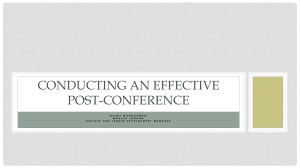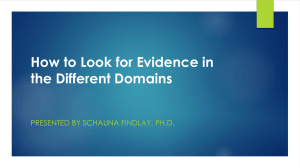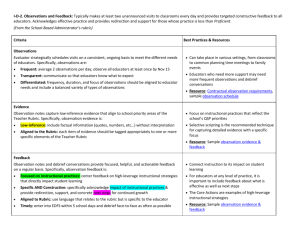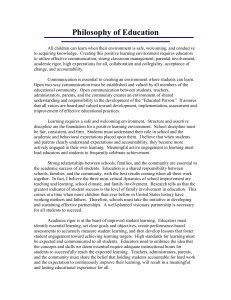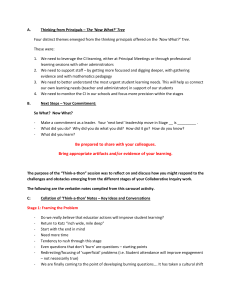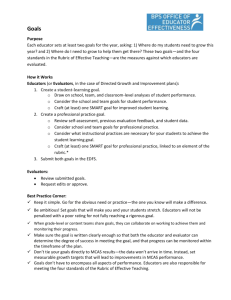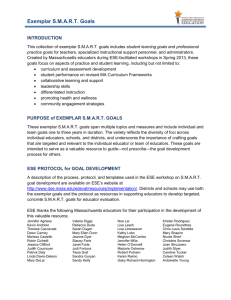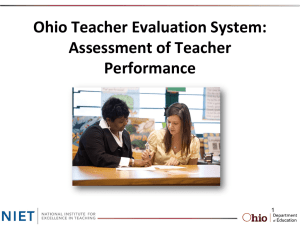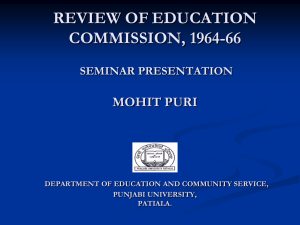What-Is-Evidence - Standard for Success
advertisement
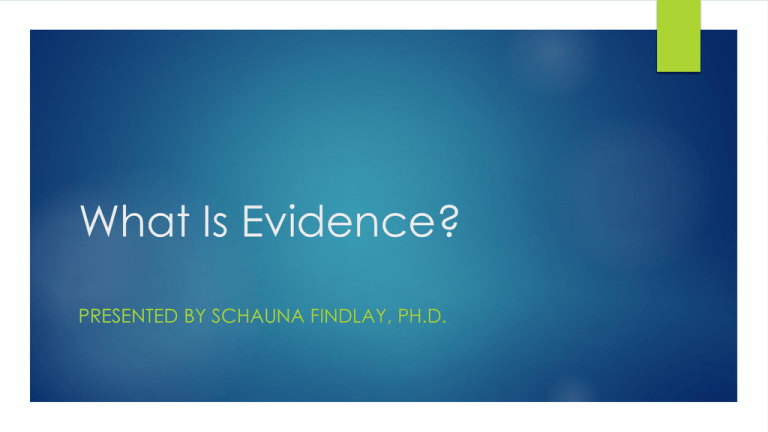
What Is Evidence? PRESENTED BY SCHAUNA FINDLAY, PH.D. Evidence Data collected as evidence of teacher practice may be quantitative, qualitative, or a combination of both. Quantitative data includes frequencies, distributions and other counts or tallies. For example the observer could use a checklist to tally how many questions were asked of children in the front row or children who had their hands raised versus not. The evaluator might also chart the types of questions asked (higher versus lower levels). Qualitative data can include scripted notes detailing patterns of activities, vocabulary used, and events observed. In both cases accuracy is essential to ensure the credibility of the process and the evaluator. Four Key Elements of the Instructional Post-Conference Conducting the Post-Conference/Sharing the Evidence: 1. Introduction/Greeting/Establish Length Review Conference Process General Impression Question “How do you think the lesson went?” 2. Reinforcing the Teacher Identify an area of Reinforcement (ONLY one area) Ask Self-Analysis Question Provide evidence from notes Four Key Elements of the Instructional Post-Conference 3. Refining the Teacher’s Skill: Identify an area of Refinement (ONLY one area) Ask Self-Analysis Question Provide evidence from notes Give a recommendation for future practice 4. Present evidence and rating connected to the rubric Sources of Evidence Copyright © 2008 by Association for Supervision and Curriculum Development Observation of Teaching Observation of classroom practice, with the accompanying preconference and postconference, provides the best evidence of Domains 1, 2, and 3. The preconference, also called a planning conference, provides an opportunity for a teacher to display important planning skills, at least as used in planning a single lesson. The postconference, also called a reflection conference, is an important opportunity for teacher self-assessment, reflection on practice, and professional conversation—activities that have been demonstrated to contribute to professional learning by teachers. Observation of Professional Activities Faculty and team meeting engagement Parent conferences RTI or Child Study Team meetings Conduct Reflection Conferences from these Observations, too! Artifacts Pre-conference planning documents Unit plans Assignments/work for students to complete Student work Student assessments Grade books and data logs Class newsletter Phone log Letters to parents Evidence of Student Learning Standardized Test Results Student Learning Objectives Common Benchmark Results Unit Test Results Classroom Assessment Results Progress Monitoring Data Announced Versus Unannounced Copyright © 2008 by Association for Supervision and Curriculum Development The Importance of Consistency Training in the evaluation rubric can be highly valuable professional development for teachers, mentors and coaches, and evaluators. During high-quality training, educators come to understand the different components of the rubric, how the components are related to one another, and which ones share the common themes of, for example, equity, high expectations, or the appropriate use of technology. They learn that the levels of performance are levels of performance of teaching, not of teachers, and how evidence is interpreted to reflect those different levels of performance. The most valuable aspect of training are the professional conversations among educators about their practice. In these conversations, teachers acquire ideas from one another, and administrators see the richness of experience that their teachers bring to their work. For this reason, it's important, when possible, for teachers, coaches, and administrators to participate in training together; it's important for teachers not to believe that administrators are engaged in secret activities. For all educators involved in supporting and evaluating teaching, the evidence is the same. The conversations among all educators are enriched by having in the same room individuals with different perspectives and responsibilities within the school. Idea Chain: Line up 1-10 Fold the line in half and those with high ratings share your practice. 1. I USE OBSERVATION DATA AS A STRONG SOURCE OF EVIDENCE. 2. I USE ARTIFACTS AS A STRONG SOURCE OF EVIDENCE. 3. I USE CONFERENCES AS A STRONG SOURCE OF EVIDENCE. 4. I USE STUDENT DATA AS A STRONG SOURCE OF EVIDENCE.
